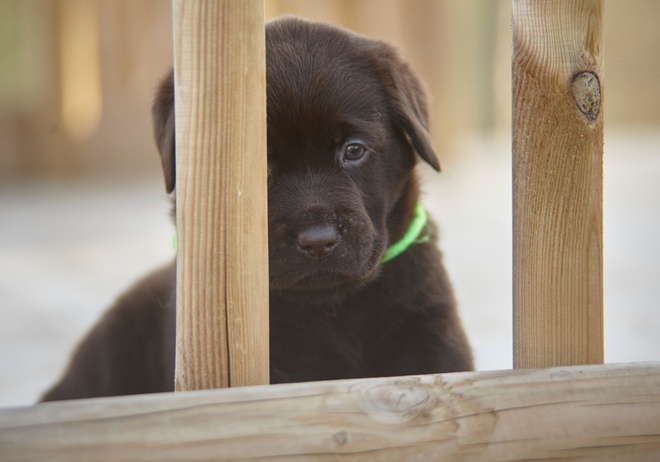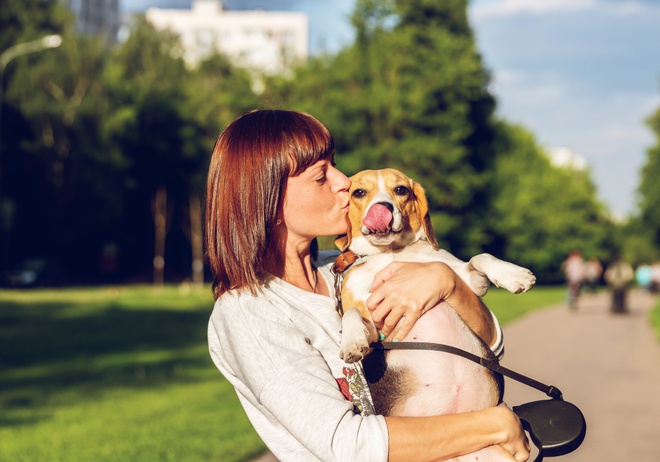How can I prevent my dog from being stolen?
Dog theft is a growing problem in the U.S. According to a report from the American Kennel Club (AKC), there has been a steady uptick in dog theft cases over the past few years, with a 60% jump in cases from 2019 to 2020. Some dogs are unknowingly considered stray or abandoned and then adopted. Sadly, others are stolen by thieves motivated by profit, revenge, or even cruelty.

Reading time : 5 min
If you're a dog owner, it's important to take some preventative measures to protect such a situation. This article will provide some tips on how to do that.
TOPICS
Why do people steal dogs?

People steal dogs for a variety of reasons, some of which are driven by financial gain, while others are motivated by a desire for companionship or to use the animal for illegal activities. One of the primary reasons for dog theft is to sell them to unsuspecting buyers, often through online marketplaces or pet stores. Dogs that are in high demand, such as purebred or puppies are especially vulnerable to this type of theft. Additionally, some dogs are taken for breeding purposes, with the intention of selling their offspring for profit.
During the COVID lockdowns, there have been reports of an increase in dog theft. With more people staying at home and adopting or purchasing pets, the demand for dogs has risen. This has led to a surge in dog theft, with thieves taking advantage of the high demand and the limited availability of certain breeds.
Whatever the motive, dog theft is a serious crime that can have devastating consequences for both the pet and its owner.
Which dog breeds are the most stolen in the US?

Certain dog breeds are more commonly targeted by thieves due to their popularity and high resale value. According to the American Kennel Club, some of the dog breeds that are most commonly stolen include Yorkshire Terriers, French Bulldogs, Chihuahuas, Pomeranians, and Bulldogs. These breeds are often smaller in size and easier to transport, making them more vulnerable to theft.
Additionally, breeds that are in high demand, such as designer breeds like Labradoodles or Goldendoodles, are also at an increased risk of theft. However, it's important to note that any dog can be a target for theft, regardless of breed or size.
10 tips to prevent dog theft

Tip #1: Equip your dog with proper ID
Ensuring your dog wears a collar with an ID tag displaying your contact information is the law in most urban areas. But a newer technology called a microchip can greatly increase the likelihood of a swift reunion. The size of a grain of rice, the process costs just $50-100 and is fast and virtually painless. Sadly, just 15% of dogs without ID tags or microchips are reunited with their families. The result: about 10 million pets are lost in the United States each year, the American Humane Society reports. What's more, microchipping your dog and keeping the registration up-to-date further improves the chances of recovery.
Despite this data, just 26 percent of dogs in the United States wear a microchip, according to a recent survey of pet owners byAmerican Pet Products Association. In contract, did you know that microchipping is required for all cats and dogs throughout the 28-member European Union?
Tip #2: Stay on the lookout in public spaces
Dog thefts more typically occur in public spaces. Always keep an eye on your dog when in public areas such as parks or busy streets. By staying alert and attentive, you can deter potential thieves.
Tip #3: Connect with other dog lovers
Establishing a network with fellow pet owners in your neighborhood can help in sharing information and keeping each other informed about suspicious activities. Neighbors can be valuable allies in preventing dog theft and recovering lost pets.
Tip #4: Secure your home and yard
If your dog stays outdoors alone, invest in proper security measures, such as locks on gates and sturdy fencing. If your dog can be aggressive, this can benefit both the dog and any passersby. Installing surveillance cameras can provide additional security and deter potential thieves.
Tip #5: Be discreet about your dog's value
To avoid attracting unwanted attention, consider removing any information from your dog's collar that may indicate their breed or value. Additionally, err on the side of caution when sharing information or photos of your pet on social media.
Find out the 5 most important steps to find your lost pet
All the information you need to find your beloved companion
Tip #6: Trust your instincts
If you feel uneasy about a situation or a new acquaintance, take precautions to ensure your dog's safety. Sometimes, your gut instincts can be an invaluable tool in protecting your pet.
Tip #7: Train your dog
A well-trained pet is less likely to wander off or be lured away by a potential thief. Teach your dog basic commands such as "come," "stay," and "drop it" to ensure they can respond to your cues in case of danger.
Clickers and GPS trackers with vibrating or ringing features also serve as valuable tools for training cats and dogs by providing clear, consistent, and precise cues that facilitate quick association of desired behaviors. Indeed, these devices promote positive reinforcement and enable faster learning by improving communication between pets and their owners. What’s more, they assist in recall training and distance training, allowing pet owners to manage their pets effectively even when out of sight or in noisy environments. Ultimately, the use of these devices helps reduce stress and frustration during training sessions, resulting in a more enjoyable and efficient learning experience for pets and pet owners alike.
Tip #8: Never leave your dog unattended
If you like taking your dog on errands, it's better to leave them at home if they can't be with you the whole time. You already know that leaving your dog in hot or even warm weather can be deadly, but remember that unattended, a determined thief can break your windows and snatch your pet in just a few minutes.
In some places, you may think it’s safe to tie up your dog right outside a store. However, this, too, can leave your dog vulnerable to theft. If your backyard is visible or accessible to strangers, keep a close eye on your pet when they’re outside. Even when walking your dog, use a leash as a safety measure to keep them near you and prevent them from wandering off.
The AKC report states that dogs left alone in cars or tied up outside shops are prime targets for thieves (1).
Tip #9: Have a plan ready for when your dog goes missing
In the event your dog goes missing, knowing what to do and who to contact in advance can make all the difference. Create a list of phone numbers for local animal control, shelters, and your veterinarian, as well as a recent photo and description of your pet to create a lost pet poster.
Tip #10: Act quickly if your dog is stolen
If you suspect your dog is stolen, report the theft to the police and local animal control as soon as possible. Share your dog's photo and details on social media and engage your local community in the search.
Where a GPS tracker can help

Using a GPS tracker for your dog can be an effective way to prevent theft and increase the chances of recovering your pet if they are stolen. GPS trackers allow you to monitor your dog's location in real-time, providing you with peace of mind and the ability to quickly locate them if they wander off or are taken.
In the case of theft, GPS trackers can be particularly valuable, as they can help you track your dog's whereabouts and provide evidence to the authorities. Additionally, many GPS trackers come with other features such as geofencing, which allows you to set up virtual boundaries around your property and receive alerts if your dog goes beyond those boundaries.
By investing in a GPS tracker for your dog, you can take an important step in preventing theft and protecting your furry friend.
Conclusion
By implementing these 10 tips, you can significantly reduce the risk of your dog being stolen. Remain proactive in safeguarding your pet and ensure that you and your furry companion can enjoy many more happy years together.
Continue reading our guide
This article is part of a complete guide on the subject. Do not miss the next chapters.
How to find a lost pet ?
Discover the 5 most important steps
All the information you need to find your beloved companion
